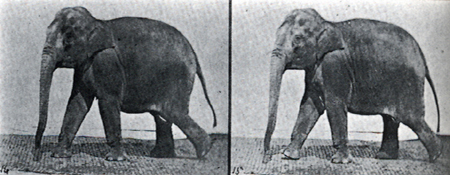 |
||
| The Art of Memory | ||
| HOME The Art of Memory Origin Myth Vivid Imagery Memory Is Personal Your Inner Monty Python The Use of Places Poetry and Song The Grid System Why It Works The Number Mnemonic Free Ass-sociate Conclusion |
When I was an undergraduate in the film department at the University of Colorado many years ago, a visiting lecturer (I no longer remember his name) recommended that I read a book called The Art of Memory, by a woman named Frances Yates. He said it was the most interesting book he'd ever read. When, a couple years later, I finally followed up on this recommendation, it felt like I had been initiated into something truly mysterious and wonderful -- a whole new way of thinking not only about the mind and history, but also film, visual arts, literature. It was really one of those life-changing reading experiences. When Yates wrote her pathbreaking study decades ago, her approach to the subject of how pre-Gutenberg orators, teachers, and philosophers memorized vast amounts of learning, whole books verbatim, was a bit distanced. She evoked a sense of wonder at these dead mental arts, but she doubted they could be relevant in our era of easily accessible media. More recent scholars, following in her footsteps, are far less dismissive of the power of these ancient arts, however. And lately, it is not hard to find guidebooks and manuals to applying these memory techniques. Even with facts at our fingertips, even with Wikipedia, people still need to learn things. Medical students cannot use PDAs to substitute for comprehensive memory of human anatomy; there are no Matrix downloads for learning a foreign language or how to fly a helicopter. Learning will always be with us. And the tools of artificial memory, honed through practical use from time immemorial, are not only astonishingly effective when actually applied, they also correspond closely to what science is just lately discovering about the way the brain works. There are also numerous side-benefits to practicing the art of memory. One of these is making the mind more creative and flexible. And the best part is, it's actually fun -- in fact, fun and play are the whole point, because these are the foods the memory feeds on, so to speak. With that in mind, what follows is a brief historical guide and primer for the art of memory. |
A human being should be able to change a diaper, plan an invasion, butcher a hog, conn a ship, design a building, write a sonnet, balance accounts, build a wall, set a bone, comfort the dying, take orders, give orders, cooperate, act alone, solve equations, analyze a new problem, pitch manure, program a computer, cook a tasty meal, fight efficiently, die gallantly. Specialization is for insects. -- Robert A. Heinlein |
All material copyright 2006
Eric Wargo